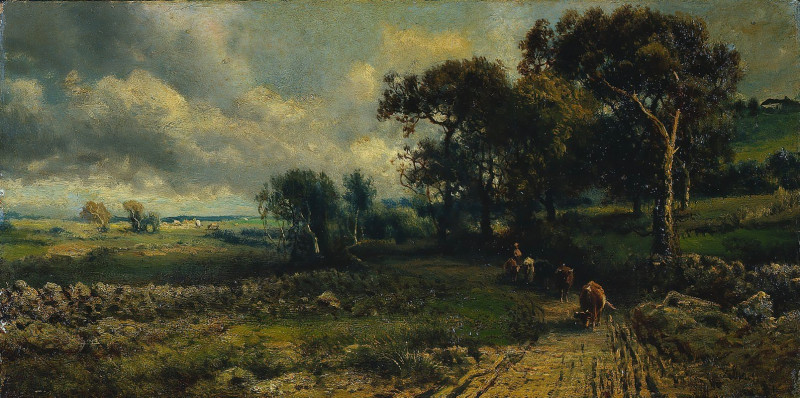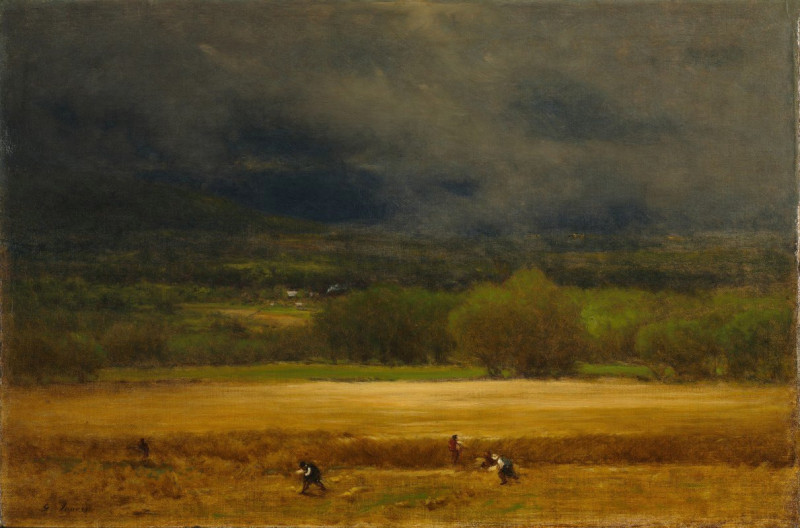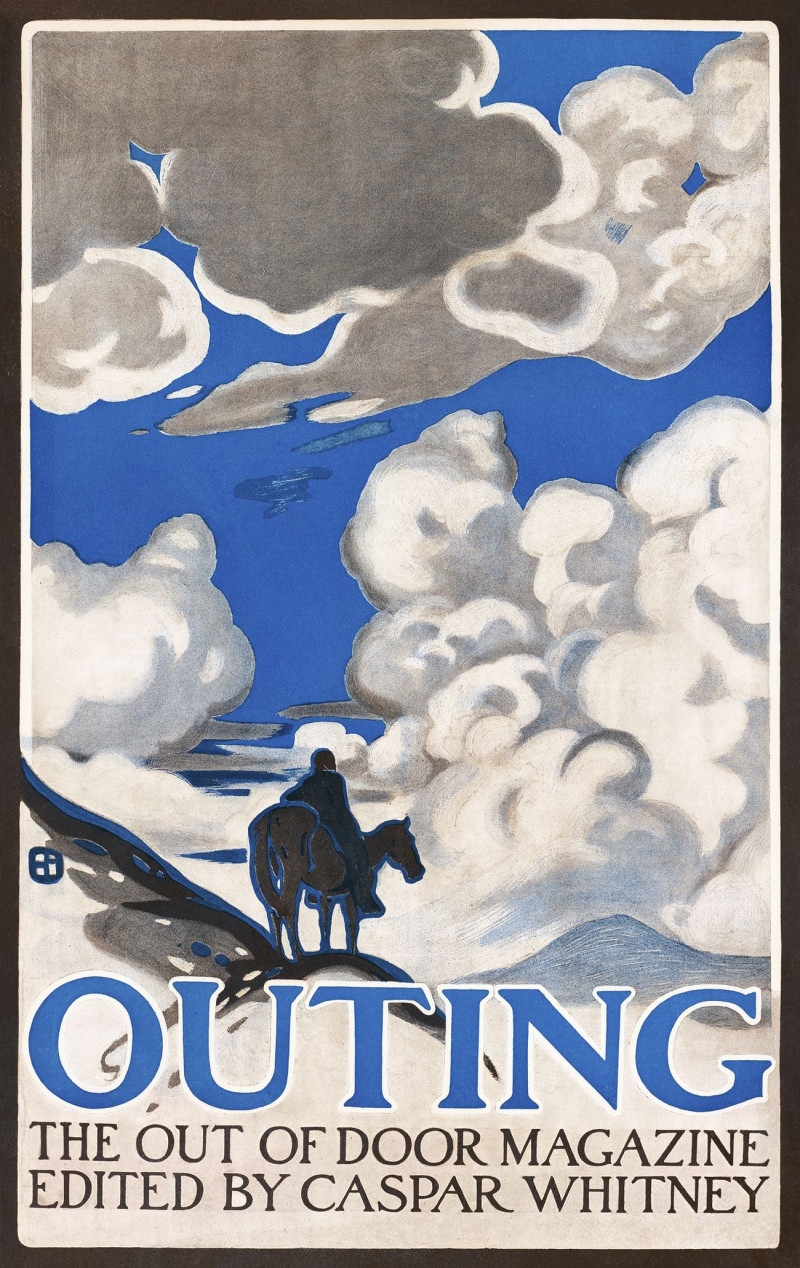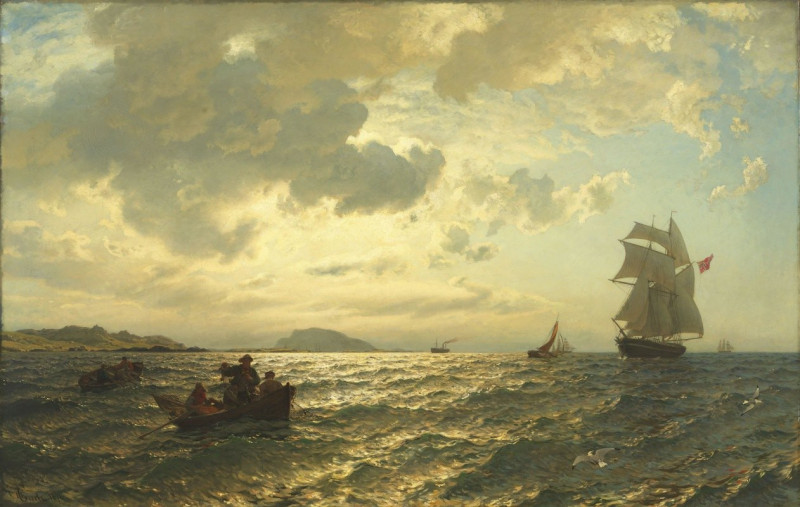Approaching Storm from the Alban Hills (1871)
Technique: Giclée quality print
Recommended by our customers
More about this artwork
"Approaching Storm from the Alban Hills" (1871) by George Inness captures the intense and moody ambiance signifying an impending storm. The painting reveals a vast landscape under a dramatic, cloud-filled sky, an imminent storm throbbing with energy and emotion. The foreground is graced with lush, verdant terrain where figures seem small and transient against the grandeur of nature. These human elements, interacting subtly with the environment, underscore a sense of vulnerability and the ephemeral moment before nature's unleashed power.Inness's use of muted, earthy hues and soft brush strokes enhances the painting’s ethereal quality, imbuing it with a sense of impermanence and change. The Alban Hills serve as a majestic backdrop, their outlines blurred and softened by the brooding sky, suggesting the transient light and shifting shadows cast by the storm clouds above.
Delivery
Returns
George Inness (May 1, 1825 – August 3, 1894) was a prominent American landscape painter.
Now recognized as one of the most influential American artists of the nineteenth century, Inness was influenced by the Hudson River School at the start of his career. He also studied the Old Masters, and artists of the Barbizon school during later trips to Europe. There he was introduced to the theology of Emanuel Swedenborg, which was significant for him; he expressed that spiritualism in the works of his maturity (1879–1894).














































